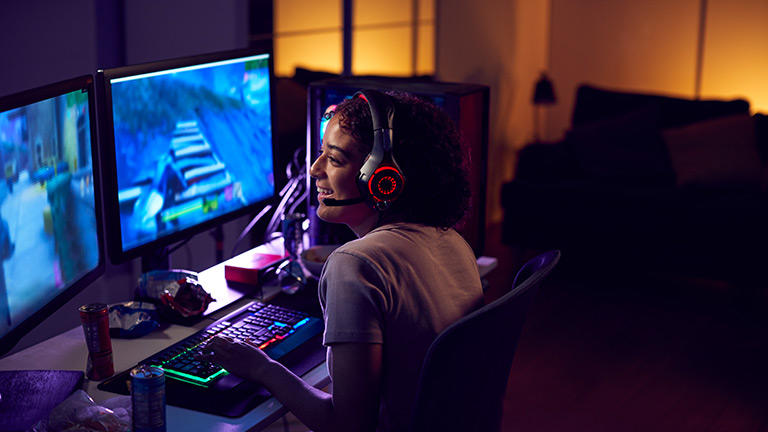How To Secure Game Development Funding – A Comprehensive Guide

Game development is expensive, and a lack of funding can be devastating. Every aspect of the production cycle costs money, from creating individual assets to marketing.
It is why it’s crucial to find suitable funding sources. Here are some tips to help you secure funding for your video game project.
Identify Your Goals
Finding financing to create their games is one of the most formidable hurdles for game developers. It’s crucial to comprehend the many funding options and how they might assist you in achieving your objectives, whether it’s a loan, equity, or crowdsourcing.
The first step is to identify your goals. Goals help you keep track of progress and are a great way to measure success. Write them down and tell others so you can hold yourself accountable.
A strong business plan is essential to obtaining game development funding. It needs to be realistic and contain clear, actionable steps.
Knowing your audience and market trends is essential to make a successful business plan. It will help you determine whether your project is feasible and the best funding for your game.
Getting feedback from players to gauge how they respond to your game is also essential. It might help you decide which features to add first and which to leave off.
Another good option is to work with a publisher. These have tons of experience in launching and marketing games, so they are a great source of funding for game developers. However, you should ensure that the deal is worth the upfront cash and that they have a strong incentive to sell your game.
As with any other business, many risks can affect the success of your game. For example, investors expect a return on their investment and will often pressure developers to produce hit games that generate lots of revenue. It can lead to games being released before they are ready or not being made.
Create a Business Plan
As with any business, a solid business plan is integral to securing funding for your game development project. Creating and implementing a business plan can help secure funding from traditional investors and new sources such as crowdfunding and loans.
You’ll need to research your industry and market trends to create a business plan. You can search online for news stories or talk to other entrepreneurs or industry experts. Then, you’ll want to compile the results of your research and use them in your plan.
A business plan should include an executive summary, company description, competitive analysis, sales and marketing strategy, financial projections, and an appendix. The executive summary and company description should be brief and concise.
Information about the competition in your industry is provided in the competitive analysis part of a business plan. It includes the number of companies in the market and the size of their share.
Ideally, you’ll conduct this analysis by interviewing potential customers and industry experts. This is a terrific approach to assess your level of competition, the markets in which you can compete, and the steps you can take to draw in clients.
It would be best to look at your competition’s products and services to determine how they differ from yours. It will help you determine whether your product will be a good fit for the market.
You’ll also need to provide an overview of your management team and corporate structure. It includes the owners, their roles, their professional background, and a list of board members. In addition, you should detail your sales and distribution strategies.
Find Backers
You can raise money for your game development project in various ways. These include conventional financing, equity crowdfunding, and loans. However, it’s essential to understand that the games industry differs significantly from other sectors.
To secure funding for your game, you need a unique idea. It would be best if you also showed that your project has a good chance of success.
A demo can be a fantastic method to promote your game and generate interest. However, it would be best if you made it as simple to play as possible. This way, your target players can enjoy the whole experience, and you’ll be more likely to get funded.
You must balance making it easy to play and challenging to master. It cannot be easy, but it’s a critical factor in selling your game.
Another popular method is to seek funding from friends and family. While this might not be as effective as securing professional investors, it’s an excellent way to build a community around your game.
You can also look for grants to help you fund your project. Governmental initiatives or charitable organizations usually offer these, and they can provide funds that don’t have to be paid back.
There are also accelerator programs that can help you speed up your game’s development and find backers. These programs can help you find a team and connect you with publishers and potential research investors.
Crowdfunding for games has become increasingly popular in recent years. It’s a low-risk way to raise money and can boost your game’s PR. In addition, it can help you to build an engaged audience that will want to support your game when it launches.
Make a Demo
Demos are a popular way to show off your game and entice players to buy the full version. They can range in size and scope, but they are typically a tiny playable portion of your game that shows some of the core mechanics and leaves the player excited for more.
Developers opt for a demo version when their video game is close to completion, so they can receive feedback and incorporate it into the final product. They also use demos to give early supporters a chance to experience their game, which can be instrumental in gaining support from investors and publishers.
Despite the risks involved, making a demo can be highly beneficial. Triple Topping, for example, created a demo for Welcome to Elk before the game even launched, and it was instrumental in driving pre-orders and Steam wishlist signups.
The key is creating a quality demo that measures up to the final product and represents what players will get when they buy your game. It is crucial to ensure that the demo will not mislead or confuse players, and it’s significant for narrative-driven games that need to give an accurate picture of what the story can be like in the final product.
Schade says a good demo should be long enough for players to fully experience the core gameplay without feeling overwhelmed or bored. Ideally, it should last at least 50 hours for a full-fledged title and up to 100 for an indie game that’s only a few years old.
To get a demo up on Steam, developers must first publish and add it to their base game’s app landing page. They need to configure it to be prominently displayed on the store page. It is done by clicking “Edit Store Page” and selecting the option to “Prominently Display Demo.”
Sell Your Game
Selling your game is crucial to any successful indie developer’s plan. It can help secure funding for your next project and give your career a jumpstart. However, it can also be challenging to determine where and how to sell your game.
Consider your audience when marketing your game, as this is the most crucial thing to remember. It means researching recent trends, looking at other games in the same genre, and finding out if there’s an underserved market that you can reach.
Another critical aspect to consider is how you plan to price your game. It’s crucial to understand that if you want to sell your match for a higher price than its peers, you must offer something unique that sets it apart from its competitors. It can be anything from advanced destruction physics to a soundtrack composed by a famous musician.
Once you’ve determined a price for your game, you can start marketing it. It can include posting on social media, putting it on your website, and contacting local game stores to ask if they would be interested in carrying your game.
Alternatively, you can contact distributors or publishers looking for new titles to add to their portfolios. These people can provide you with valuable feedback and help you secure funding.
If you’re a small indie developer, you may also be able to get the game into a major retailer through their trade-in program. It can be an excellent way to generate revenue, but it’s important to note that retailers often mark up games three times more than trade-in values.
Finally, you can sell your game through Steam or other digital distribution platforms if you’ve secured game development funding. These options are available to indie developers and can be a great way to bring your game to thousands of players worldwide.
For more valuable information visit this website




